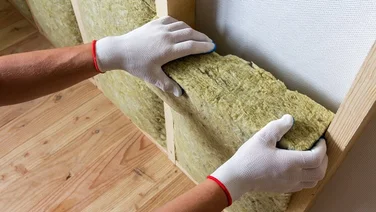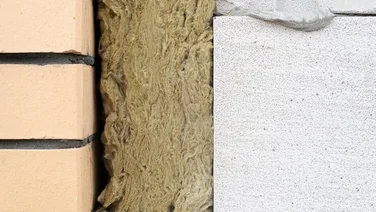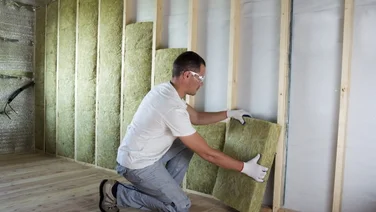- About 30% of heat in your home is lost through the roof alone, and walls and floors also lose their fair share.
- Insulation isn’t just about staying warm – it’s also key to saving money, reducing carbon emissions and enhancing comfort at home.
- Multifoil insulation, a high-tech material inspired by spacecraft technology, offers an innovative and efficient solution to tackle heat loss effectively.

Around 30% of the heat lost from your home occurs through your roof. Another 25%, give or take, is also lost through your walls. Another 10-20% is lost through floors.
For this reason, having a decent amount of insulation in these areas is a great way to keep all that lovely (and expensive) heat where it should be – inside. There are many sizes and shapes of insulation products out there, but one increasingly popular type is called multifoil insulation.
But what is this new wonder insulation? Let’s find out.
What is foil insulation?
Foil insulation, or multifoil insulation, is a special high-tech insulation that can reflect up to 97% of radiant heat. Similar to the kind of insulation used on spacecraft to protect vital components, this foil offers unparalleled insulating properties over more traditional forms, such as rock wool or fibreglass insulation.
The insulation itself consists of a composite of alternating layers of aluminium foil and insulating sections of thermo-foam and polypropylene called wadding. These outer layers help reflect thermal radiation back into a space, while the inner layers help block heat loss by conduction and convection.
The low-emissivity outer layers of the foil insulation rolls reflect a large proportion of radiant heat back into a building. To this end, it drastically minimises heat loss.
So, it’s pretty neat all around.
What are the benefits of foil insulation?
- Lowers energy bills – Foil insulation significantly reduces heat loss, helping homes retain warmth more efficiently. By improving thermal efficiency, homeowners use less energy for heating, directly lowering monthly energy bills.
- Cuts carbon emissions – Better insulation means reduced reliance on heating systems and, by extension, decreased fuel consumption. Consequently, this reduces carbon emissions, supporting a greener, more sustainable environment.
- Moisture control – Foil insulation is an excellent barrier to moisture and condensation build-up. This prevents issues such as dampness, mould growth and structural damage, keeping interiors dry and healthier.
- Less heat loss – Foil insulation dramatically reduces heat escape by reflecting radiant heat inside. This maintains consistent indoor temperatures, resulting in more comfortable living spaces throughout the year.
- Very durable– Foil insulation is designed to withstand harsh conditions without degrading, often lasting decades. Its durability reduces long-term maintenance costs and makes it a cost-effective insulation solution.
- Can be installed anywhere – Thanks to its thin, flexible design, multifoil insulation easily fits into tight, unconventional spaces. This adaptability makes it suitable for roofs, walls, floors and even loft conversions.
- No planning permission required – Multifoil installation is usually considered internal building work, meaning it typically doesn’t require planning permission. Homeowners can proceed with installation without lengthy bureaucratic delays.
- Easy installation – Multifoil insulation comes in lightweight, easy-to-handle rolls, simplifying installation. DIY installation is possible with basic tools, or professionals can quickly install it, reducing labour costs.
- Space-saving design – Due to its thin profile, multifoil insulation saves valuable internal space compared to bulkier traditional insulation. It’s ideal for projects such as loft conversions or small rooms.

Is foil insulation better than traditional insulation?
Given its more sophisticated design, foil insulation is a quantum leap in insulation compared to more traditional kinds. Others, such as rock wool, only ‘attack’ heat loss by preventing conduction and convection; multifoil can block all three main heat-loss mechanisms.
Moreover, foil insulation typically uses less material and offers comparable thermal performance to other forms of insulation. On average, it tends to be three to five times thinner for the same thermal insulation punch.
Foil insulation is safer to install and use as it doesn’t release fibres that can make your skin itch or give you respiratory problems if you are not wearing protective equipment during the installation process.
Because of this, it is straightforward to install and can also control water vapour and airflow through it. It is also an excellent choice for an often overlooked aspect of insulation known as thermal bridges.
These are bits of the physical structure of something, such as a roof, that cannot usually be as easily insulated as other parts or that bypass the insulation altogether. Examples include areas where a floor meets a wall, window or door frames, and structural elements such as beams, roof rafters and studs.
Foil insulation is also far more durable than other forms of insulation. It can last many years without fear of damage from insects, rodents, fungi, mildew or other moisture-related issues. It is also more robust and can resist accidental tearing or puncturing.
How much does foil insulation cost?
| Category | Item | Details | Estimated Cost |
|---|---|---|---|
| General Cost | Materials & Installation | Cost per m² | £75 – £120 |
| Material Costs (Examples) | SuperQuilt | Roll size: 1.5m x 10m | £95 – £118 (inc VAT) |
| SuperFoil | Roll size: 1.2m x 10m | £75 – £90 (inc VAT) | |
| EcoQuilt Expert | Roll size: 1.2m x 10m | Around £90 (ex VAT) | |
| Installation Kits | Multifoil fitting tool kits | Around £48 (inc VAT) | |
| Installation Costs | DIY Installation | Tools/materials (foil tape, staples, staple gun) | Varies depending on cost of tools and materials |
| Professional Installation | Labour cost per m² | £20 – £30/m² | |
| Example Scenarios | DIY (100m² SuperFoil) | Materials, tools and accessories | £750 – £900 |
| Professional (100m² SuperQuilt) | Materials and labour | £2,500 – £3,500 |
*Note the above figures are only intended as estimate values. The actual cost will vary depending on your location, the size of the job needed, etc.
Is foil insulation eco-friendly?
In short, yes, foil insulation is eco-friendly. It can cut emissions in your home, has a long lifespan (usually around 50 years) and is recyclable.
This kind of insulation also takes up less space when installed and emits no harmful chemicals when installed or throughout its lifespan.
One of the primary insulating materials, polypropylene (or PP for short), is a versatile, fully recyclable thermoplastic polymer used in various applications. Due to its strength, durability and resistance to chemicals and moisture, it is used in packaging, textiles and the automotive and medical industries.
The other, thermo-foam, is made from polyurethane (PU) foam, designed for thermal and acoustic insulation. While a form of plastic, it is also recyclable, versatile and has many insulation applications.
Can I install foil insulation myself?
Yes, you can. It’s relatively straightforward because it is lightweight, easy to handle and doesn’t necessarily require protective gear to install. However, you’ll probably want a hand for jobs such as insulating lofts.
For a job like this, you’ll need rolls of insulation, a sharp pair of scissors and, ideally, staples and a staple gun. You’ll also want materials like aluminium foil tape.
That said, getting a professional to do the job for the best results is always advisable unless you’re familiar with installing it. They will come with all the necessary tools but also have experience, training and insurance to finish the job.
They’ll also usually guarantee their work in case something goes wrong.
Summary
- Foil insulation provides a versatile, cost-effective way to significantly boost your home’s energy efficiency and comfort.
- Multifoil insulation helps reduce the impact on your wallet and the environment by cutting down energy bills and emissions.
- Its durable, moisture-resistant design ensures a long-lasting, hassle-free insulation solution suitable for nearly any space in your home.
- Thanks to its slim profile and ease of installation, upgrading your insulation doesn’t require extensive renovations or planning permission.
- Whether you opt for DIY installation or hire a professional, multifoil insulation offers flexibility, convenience and reliable thermal protection.
- Considering all its benefits, multifoil insulation isn’t just a wise investment – it’s a future-proof choice for a warmer, greener home.







